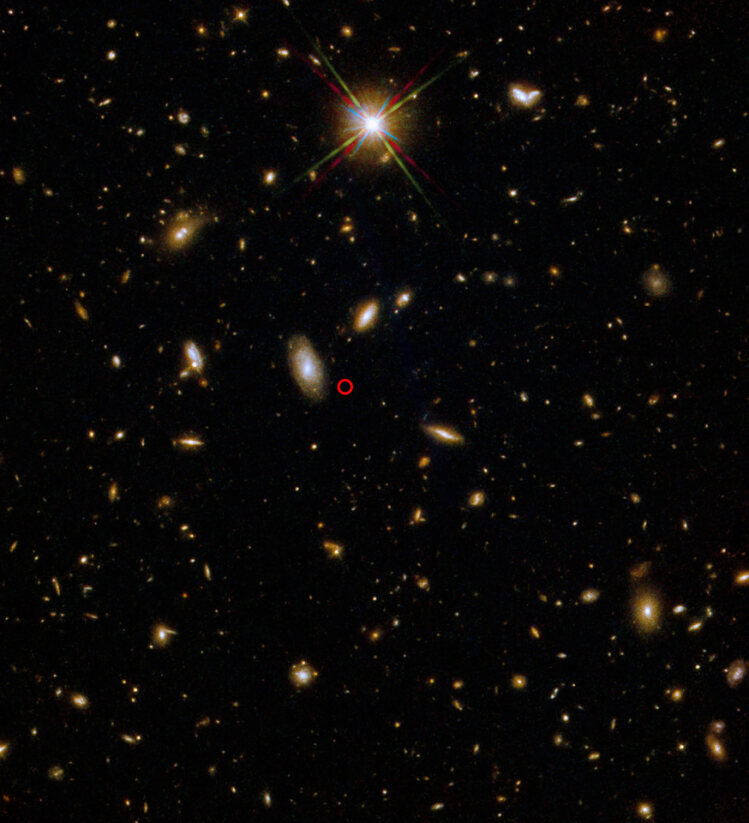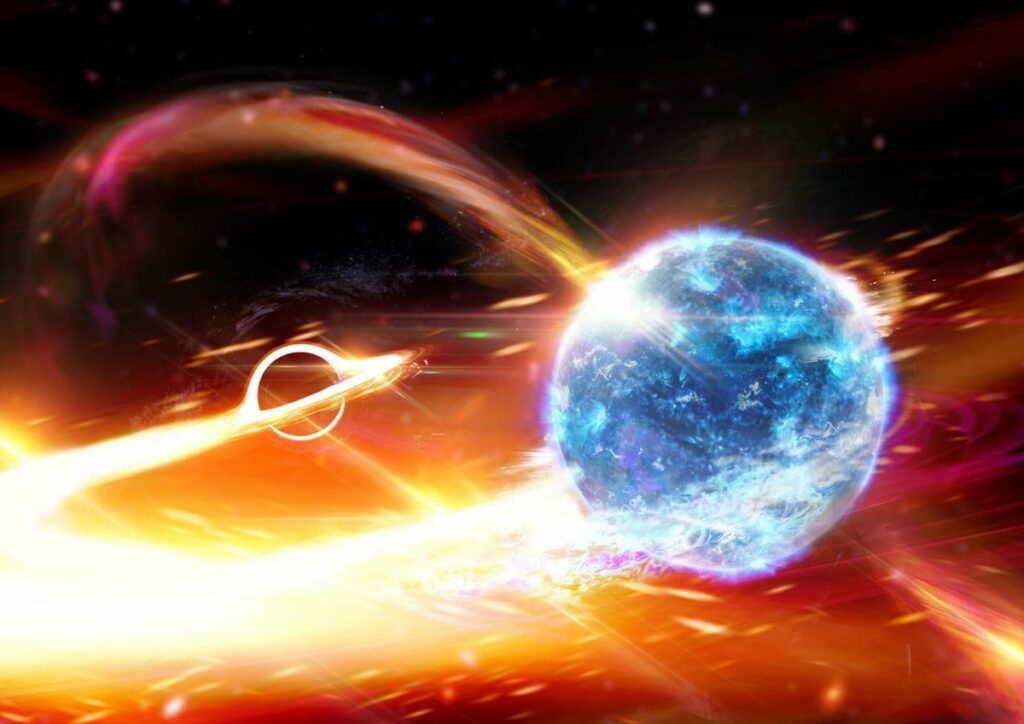This gamma-ray space mystery may finally be solved with new black hole simulations
Distinguishing between different types of gamma-ray bursts just got a lot more complicated.
A gamma-ray burst (GRB), typically associated with an exploding massive star, may have in fact come from the merger of a neutron star and a black hole. The existence of this burst, designated GRB 211211A, suggests that many GRBs attributed to exploding stars may actually be caused by such mergers.
GRBs are divided into two camps. There are the short GRBs which last less than two seconds and are the result of two compact objects – either two neutron stars, or a neutron star and a stellar-mass black hole – merging. Then there are long GRBs, which send out streams of gamma rays that can last anywhere from two seconds to several hours. These longer ones are usually caused by the explosions of certain types of massive stars.
In both cases, black holes are formed, and gamma-rays are produced by magnetically powered jets that derive material from swirling accretion discs of gas formed around the black hole.

GRB 211211A, which was detected by both NASA’s Swift and Fermi space telescopes on Dec. 11, 2021, took place in a galaxy some 1.13 billion light-years away and lasted 51 seconds, meaning it was a long GRB. Yet no bright supernova was seen, although there was a fainter afterglow from the event.When astronomers studied this afterglow, they found that its spectrum looked more like a kilonova – the merger of two compact objects.
Kilonovas are known to create conditions suitable for the production of many heavy elements such as gold and platinum. Thus, the fact that there may be more kilonovas than astronomers realized impacts our understanding of the production rates of these precious metals – including those found in your jewelry.
Astronomers scrambled to explain GRB 211211A’s Jekyll and Hyde behavior. One previous explanation put forward by Chinese scientists in The Astrophysical Journal Letters was that a strong magnetic field was able to slow the debris of the neutron star as it fell into the black hole, prolonging the duration of the GRB.

Now, however, astronomers from Northwestern University believe they have cracked the puzzle with a new solution, aided by two unprecedented computer simulations describing the merger of a neutron star with a black hole.
“For the first time, we have succeeded in comprehensively modeling the entire sequence of the neutron star merger process,” said Northwestern University’s Danat Issa in a statement.
In fact, the simulation was so computationally expensive that it had to be split into two. The first half describes the neutron star and black hole up to the point at which they merge, and the second part follows the evolution of the GRB jet.
“Simulating these events posed a challenge due to the vast spatial and temporal scale separations involved, as well as the diverse physics operating across these scales,” said Issa.
What the simulations showed was surprising.
It suggested that when a neutron star is ripped apart by gravitational tides emanating from a black hole, the debris first forms a swirling accretion disk around the black hole. If the magnetic field within this disk is strong enough, the result is a short-duration jet. However, if the disk has a weaker magnetic field, the GRB jet can last for longer and possess a similar luminosity to the kind seen in GRB 211211A.
“The stronger the magnetic field, the shorter its lifetime,” said Northwestern University’s Ore Gottlieb, who led the research along with Issa. “Weak magnetic fields produce weaker jets that the newly formed black hole can sustain for a longer time. What we found just so happened to match observations of GRB 211211A.”
Many long GRBs occur at great distances of many billions of light years, and the light of the supernova or kilonova afterglow is often too faint to detect at those distances, so all astronomers have to go on is the GRB itself. The discovery that a long GRB was the result of a merger between a neutron star and a black hole means that astronomers will have to look carefully at very distant long GRBs before determining their cause.
The results are published in The Astrophysical Journal.
Source: SpaceCom
Do not forget to share your opinion with us to provide you with the best posts !



0 Comments